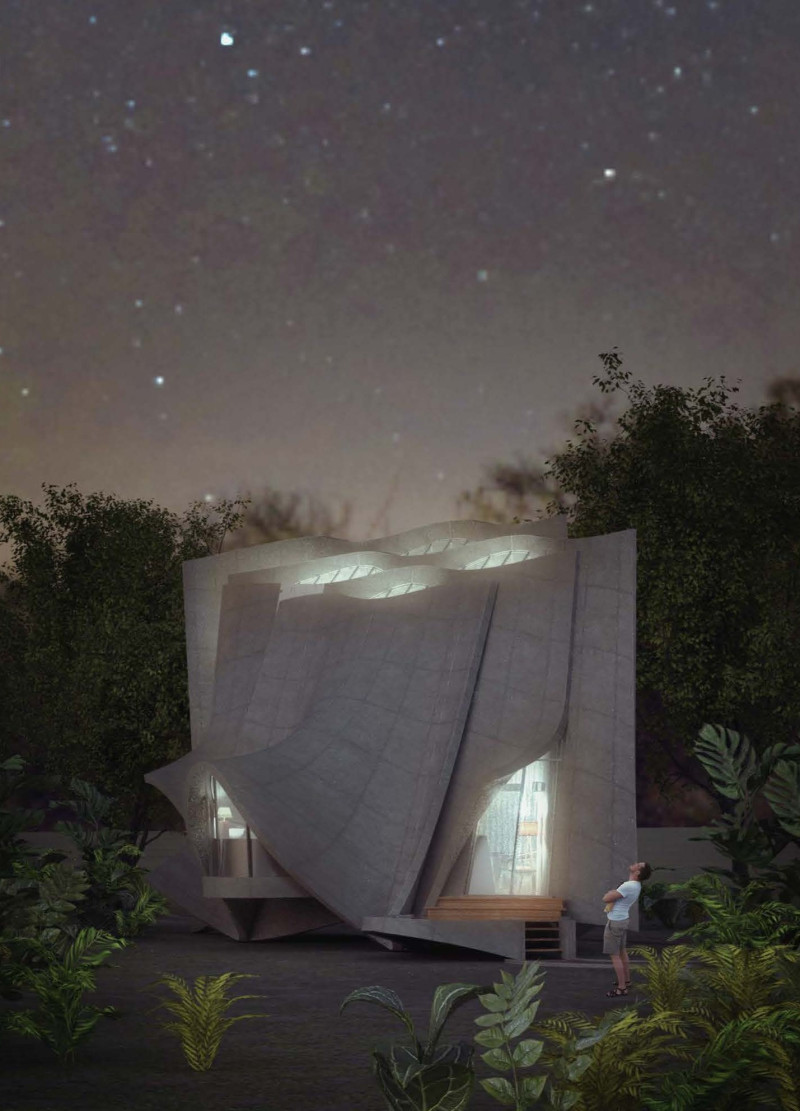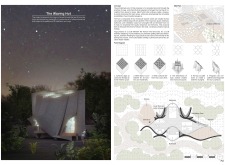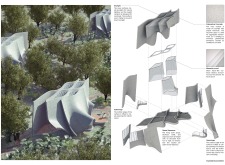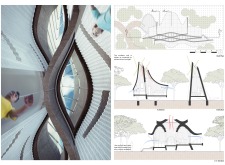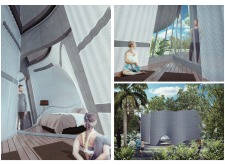5 key facts about this project
At its core, the project represents a commitment to sustainable design practices, as it utilizes a range of materials that reflect a careful consideration of their environmental impact. The primary materials employed in the construction include reinforced concrete, glass, steel, and sustainable timber. Each material serves a specific purpose, with reinforced concrete providing the structural integrity necessary for the building, while glass facilitates natural light penetration, fostering an inviting interior atmosphere. Steel is utilized in critical structural elements, offering durability, while timber introduces a warmth and connection to nature, enhancing the overall ambiance.
The design effectively responds to its geographical location, leveraging local climatic conditions to maximize energy efficiency. Large overhangs and strategically placed windows reduce the need for artificial heating and cooling, leading to a reduction in energy consumption. The roof is designed with a slight pitch, allowing for effective rainwater management, thereby minimizing runoff and promoting sustainability.
The project’s layout is characterized by an open floor plan that promotes flexibility and adaptability. This design choice not only enhances the functionality of the spaces but also encourages interaction among occupants. Key areas of the building include multifunctional spaces that can be easily reconfigured for various uses, reflecting a modern approach to architectural design that prioritizes the needs of its users.
Unique design approaches are evident throughout the project. The incorporation of biophilic design principles is particularly noteworthy, as it emphasizes a connection between the indoor environment and the natural world outside. This is achieved through the use of large windows that frame scenic views and through the inclusion of indoor gardens that promote well-being. Furthermore, the integration of smart technology into the building’s systems for climate control and lighting opens possibilities for enhancing user comfort efficiently.
Attention to detail is paramount within this architectural design. Custom cabinetry and locally sourced furnishings create a cohesive interior aesthetic that reflects the surrounding environment. Textural contrasts between smooth concrete walls, warm timber accents, and sleek glass panels provide visual interest while maintaining a sense of harmony throughout the space.
In terms of community impact, the project is designed to foster engagement and interaction. Public spaces are incorporated into the architectural layout, inviting local residents to utilize and enjoy the building. These areas serve as gathering spots for community events and functions, reinforcing the notion that architecture should be inclusive and accessible.
The project not only accounts for functionality and aesthetics but also considers longevity and resilience. The choice of durable materials and sustainable practices indicates a long-term investment in the community and the environment.
For those interested in exploring this architectural project further, detailed architectural plans, sections, and designs are available for review. A closer look at these elements can provide deeper insights into the innovative architectural ideas behind this project and highlight how design can effectively engage with its surrounding context. Engaging with these aspects will enrich the understanding of the careful thought and effort that has gone into this well-conceived architectural endeavour.


